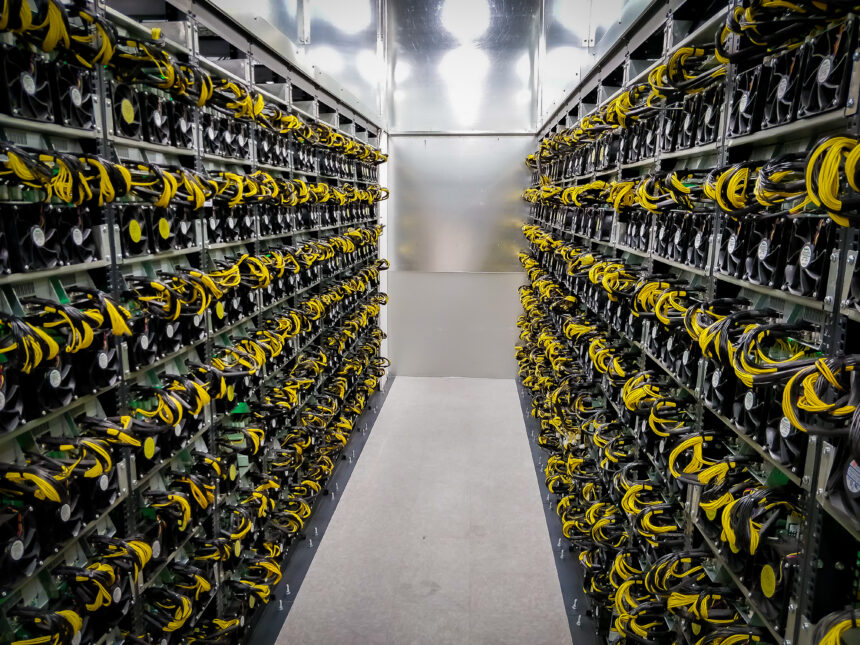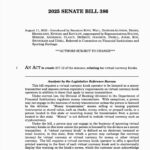Bitcoin Mining Faces ‘Incredibly Difficult’ Market as Power Becomes the Real Currency
BITCOIN MINING PLAYERS FACE CHALLENGING MARKET: Bitcoin miners have historically been influenced by the boom-and-bust cycles of the four-year halving period. However, this dynamic has shifted, according to some of the industry’s leading executives who spoke at the SALT conference in Jackson Hole earlier this week. The emergence of exchange-traded funds, increasing energy demand, and the potential for artificial intelligence (AI) to transform infrastructure needs mean that miners must explore diversification or risk being left behind. “We used to come here and talk about hash rate,” said Matt Schultz, CEO of Cleanspark. “Now we’re talking about how to monetize megawatts.” For many years, mining firms — whose income mainly came from bitcoin production — were heavily reliant on the halving cycle. Every four years, rewards would be cut in half, forcing miners to adjust costs or expand operations to endure. According to these executives, that traditional rhythm no longer characterizes the business. “The four-year cycle is effectively broken with the maturation of bitcoin as a strategic asset, with the ETF and now the strategic treasury and whatnot,” Schultz stated. “The adoption is driving demand. If you read anything about the most recent ETF, they’ve consumed infinitely more bitcoin than has been generated so far this year.” Cleanspark, which currently manages 800 megawatts of energy infrastructure and has an additional 1.2 gigawatts under development, has started to look beyond proof-of-work. “Our speed to market with the electricity has created opportunities such that now we can look at ways to monetize power beyond just bitcoin mining,” he mentioned. “With 33 locations, we now have a great deal more flexibility than we ever did before.” Schultz is not alone in recognizing the industry’s transformation in business model. Patrick Fleury, CFO of Terawulf, reiterated this viewpoint and highlighted the profit challenges miners are encountering. “Bitcoin mining is an incredibly difficult business,” he remarked. He explained the economics of bitcoin mining simply: with electricity costing five cents per kilowatt hour, it currently costs about $60,000 to mine a single bitcoin. At a bitcoin price of $115,000, half of the revenue is consumed by energy costs alone. Once corporate expenses and other operating costs are included, the margins tighten swiftly. In his opinion, mining profitability hinges almost entirely on obtaining ultra-low-cost power. — Helene Braun Read more.
Bitcoin Liquid Staking Rises
BITCOIN LIQUID STAKING RISES: Throughout much of its existence, bitcoin has been championed by its advocates as digital gold: an asset to hold rather than to utilize. This passivity has resulted in trillions of dollars’ worth of BTC remaining inactive in wallets, disconnected from the yield strategies and composability that characterize decentralized finance (DeFi). The emergence of liquid staking tokens aims to change this narrative, positioning bitcoin not just as a store of value but as a productive asset engaged in on-chain capital markets. Liquid staking allows users to contribute their crypto to help secure a network and receive a liquid, tradable token in return, representing the staked assets that can be utilized across DeFi while the original tokens continue to accrue staking rewards. Lombard Finance has become one of the leading projects in bitcoin liquid staking. Its key product, LBTC, is a yield-bearing token that is backed 1:1 by BTC. When BTC is deposited into the Lombard protocol, the underlying coins are staked, primarily through Babylon, a protocol that facilitates trustless, self-custodial bitcoin staking. Users receive LBTC in return, which can then be leveraged across DeFi ecosystems while the original bitcoin accrues staking rewards. This dual capability is crucial. Holders can maintain their exposure to bitcoin while using LBTC for lending, borrowing, and liquidity provision across platforms like Aave, Morpho, Pendle, and Ether.fi. Built for interoperability, LBTC operates across Ethereum, Base, BNB Chain, and other networks, preventing liquidity fragmentation and ensuring bitcoin can engage within a multi-chain DeFi landscape. — Jamie Crawley Read more.
Optimism and Flashbots Team Up
OPTIMISM AND FLASHBOTS TEAM UP: Optimism is collaborating with Flashbots to enhance transaction processing across its OP Stack ecosystem, with the goal of increasing the speed and customization of some of Ethereum’s most prominent layer-2 networks. The partnership focuses on sequencing, the behind-the-scenes process that influences how quickly a transaction is confirmed, which transactions are prioritized, and how much users ultimately pay. Optimism claims that Flashbots’ infrastructure, which is already responsible for creating over 90% of Ethereum’s blocks, will now provide near-instant confirmations and user-friendly transaction ordering to every chain within the so-called Superchain. This is significant because the OP Stack supports over 60% of all Ethereum layer-2 activity, according to the Optimism team, including some well-known layer-2 chains like Base, Unichain, World Chain, Ink, and Soneium. Previously, advanced sequencing features, such as ultra-fast settlement, frontrunning protection, and custom compliance rules, were only accessible to the largest chains with sufficient resources to develop them internally. With the addition of Flashbots, these features will now be available through tools for any project building on Optimism’s OP stack. — Margaux Nijkerk Read more.
Hemi Labs Raises $15 Million
HEMI LABS RAISES $15 MILLION: Hemi Labs, the Bitcoin programmability network established by Jeff Garzik, has secured $15 million in a funding round to accelerate its development and grow its ecosystem. Participants in the round included YZi Labs (formerly Binance Labs), Republic Digital, HyperChain Capital, Breyer Capital, Big Brain Holdings, Crypto.com, and others, according to an announcement via email. The company indicated that the funds will be utilized to support applications for borrowing, lending, and trading on Bitcoin while further advancing its Hemi Virtual Machine (hVM), a layer that embeds a Bitcoin node within an Ethereum VM — the framework that enables the execution of smart contracts and transaction processing on Ethereum. — Jamie Crawley Read more.
Aave Labs Introduces Horizon
Aave Labs introduced Horizon: Aave Labs has launched Horizon, a new platform aimed at institutional borrowers seeking to access stablecoins by utilizing tokenized versions of real-world assets (RWAs) such as U.S. Treasuries as collateral. At inception, institutions can borrow Circle’s USDC, Ripple’s RLUSD, and Aave’s GHO against a range of tokenized assets, including Superstate’s short-duration U.S. Treasury and crypto carry funds, Circle’s yield fund, and Centrifuge’s tokenized Janus Henderson products. The platform intends to provide qualified investors with short-term financing for their RWA holdings and allow them to employ yield strategies. — Kristzian Sandor Read more.
Google Cloud Plans Blockchain Launch
Google Cloud is moving forward: Google Cloud is set to proceed with its plans to launch a layer-1 blockchain, establishing the network as a neutral infrastructure for global finance while fintech competitors develop their own distributed ledgers. In a LinkedIn post published on Tuesday, Rich Widmann, Google’s head of Web3 strategy, shared new details about the project, named the Google Cloud Universal Ledger (GCUL). He described the platform as a credibly neutral, high-performance blockchain tailored for institutions, supporting Python-based smart contracts to enhance accessibility for developers and financial engineers. “Any financial institution can build with GCUL,” Widmann stated, suggesting that while entities like Tether may be reluctant to adopt Circle’s blockchain and payment firms like Adyen might hesitate to use Stripe’s, Google’s neutral infrastructure alleviates these concerns. — Siamak Masnavi Read more.
Washington Lobbyists Address Market Structure Bill
The crypto industry’s Washington lobbyists: The crypto industry’s lobbyists in Washington are seeking to establish a clear stance regarding the market structure bill progressing through the U.S. Senate, emphasizing they cannot support legislation that fails to provide full protection for software developers against liability for the misuse of their technology. The industry collectively presented its perspective to the Senate’s Banking and Agriculture committees “with one voice,” submitting a letter on Wednesday signed by Coinbase, Kraken, Ripple, a16z, Uniswap Labs, and over one hundred other crypto firms and organizations, including nearly all of the major U.S. lobbying groups. This unified push comes just a week before the Senate reconvenes and may reignite significant discussions on the language of the legislation, which represents the industry’s primary U.S. objective. — Jesse Hamilton Read more.
Commodity Futures Trading Commission Update
The U.S. Commodity Futures Trading Commission: The U.S. Commodity Futures Trading Commission is about to be reduced to a single commissioner when Democrat Kristin Johnson departs from the agency next week, leaving Brian Quintenz, President Donald Trump’s nominee for chair, as the only other person poised to join the regulator. Starting September 3, the five-member commission will decrease to one, as Johnson plans to exit at that time. “In advancing an agenda in the name of growth, it is critical not to dismantle the foundational resilience that supports financial stability and protects the broader economy,” she remarked in a farewell statement, urging the agency to adhere to fundamental principles as new technologies are integrated. — Jesse Hamilton Read more.



















